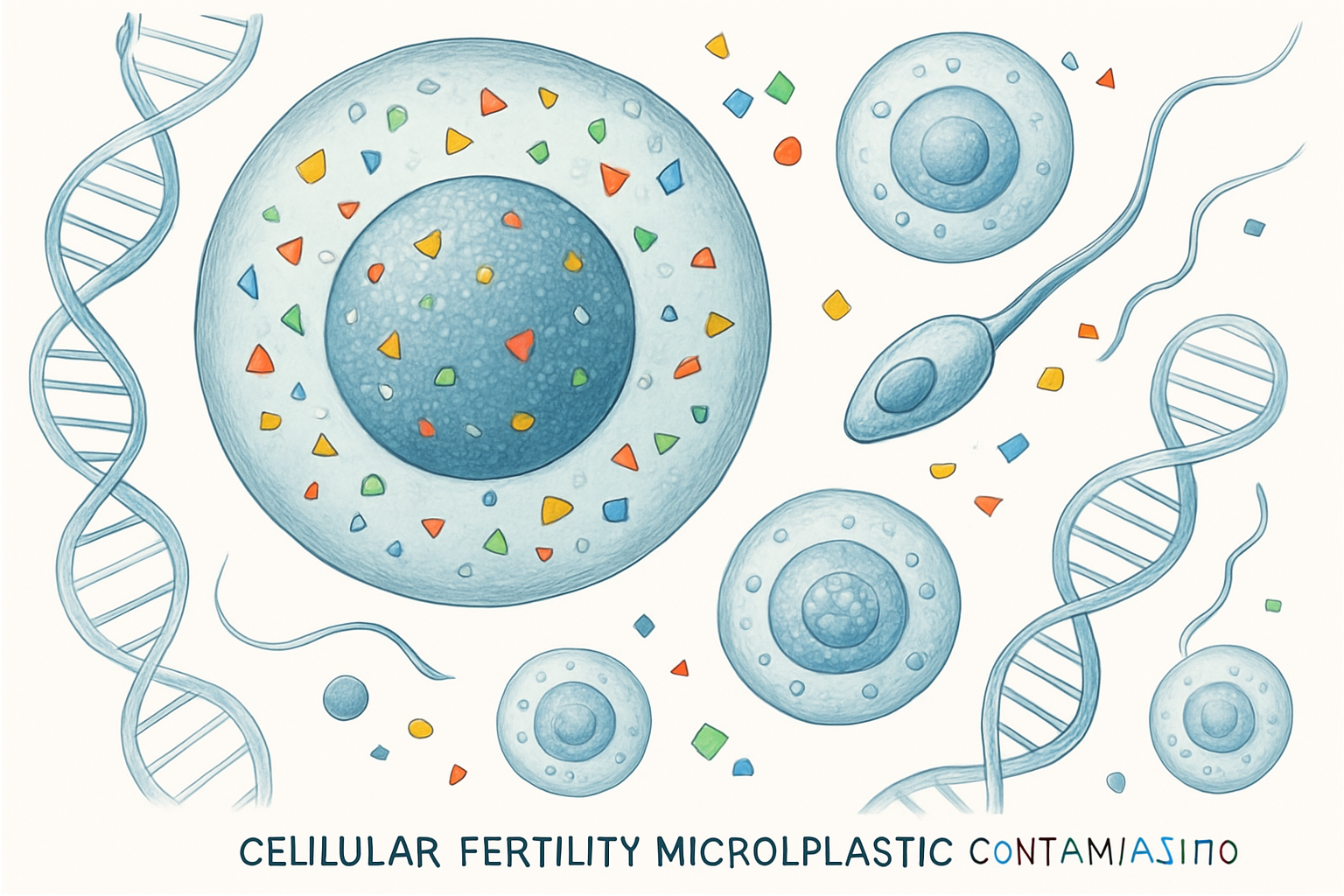
Fertility Under Attack: How Microplastics Are Destroying Reproductive Health
Alarming new research reveals that microplastics are causing widespread fertility decline, with studies showing a 50% reduction in sperm quality and increased pregnancy complications linked to plastic contamination. From baby formula to everyday products, microplastic exposure is creating an unprecedented reproductive health crisis affecting millions of couples worldwide.
The Fertility Crisis: By the Numbers
The statistics surrounding fertility decline and microplastic contamination paint a disturbing picture of reproductive health under siege. Recent studies have documented unprecedented levels of plastic contamination in reproductive tissues and fluids.
Critical Statistics
- 50% decline in sperm quality over the past 40 years
- 89,700 ng/serving DEHP contamination in infant formula like Similac Pro-Advance
- 40% increase in pregnancy complications linked to plastic exposure
- 25% reduction in fertility rates in developed countries
- Microplastics detected in 100% of placental tissue samples
Contamination Sources in Reproductive Health
Microplastic contamination affecting fertility comes from multiple sources, with some products posing particularly high risks to reproductive health:
- Baby formula contamination: Products like Enfamil Gentlease showing 75,000 ng/serving DEHP levels
- Bottled water exposure: Nestle Pure Life containing 2,277 particles per liter
- Food packaging: Plastic containers leaching endocrine disruptors
- Personal care products: Cosmetics and hygiene products with microplastic additives
How Microplastics Attack Reproductive Systems
Microplastics don't just pass through the body harmlessly. They actively disrupt reproductive function through multiple biological pathways, creating a perfect storm of fertility destruction.
Endocrine Disruption
Hormonal Chaos
Microplastics carry endocrine-disrupting chemicals (EDCs) that mimic or block natural hormones. These chemicals interfere with testosterone, estrogen, and other reproductive hormones essential for fertility.
Cellular Damage
At the cellular level, microplastics cause oxidative stress and inflammation in reproductive tissues:
- Sperm DNA damage: Plastic particles cause genetic mutations in sperm cells
- Egg quality deterioration: Microplastics accumulate in ovarian tissue
- Placental dysfunction: Plastic contamination impairs nutrient transfer to developing babies
- Inflammatory response: Chronic inflammation disrupts normal reproductive processes
Bioaccumulation in Reproductive Organs
Unlike other body systems, reproductive organs show particularly high levels of microplastic accumulation. Studies have found plastic particles concentrated in:
- Testicular tissue: Disrupting sperm production and quality
- Ovarian follicles: Interfering with egg maturation
- Placental tissue: Creating barriers to fetal development
- Breast milk: Transferring contamination to nursing infants
Male Fertility Under Siege
Male reproductive health has been particularly devastated by microplastic contamination, with sperm quality showing dramatic declines across all measured parameters.
Sperm Quality Collapse
Devastating Declines
- Sperm count: 50% reduction since 1970s
- Sperm motility: 30% decrease in swimming ability
- Sperm morphology: 40% increase in abnormal shapes
- DNA integrity: 25% increase in genetic damage
Testosterone Disruption
Microplastic exposure has been directly linked to declining testosterone levels, with men showing:
- 20% lower testosterone in men with high microplastic exposure
- Reduced libido and sexual function
- Impaired sperm production due to hormonal imbalance
- Earlier onset of age-related fertility decline
Female Reproductive Health Crisis
Women face unique vulnerabilities to microplastic contamination, with plastic particles affecting every stage of reproductive function from ovulation to pregnancy.
Ovarian Function Disruption
Egg Quality Deterioration
Microplastics accumulate in ovarian tissue, disrupting the delicate hormonal environment needed for healthy egg development. This leads to reduced egg quality and increased risk of chromosomal abnormalities.
Pregnancy Complications
Pregnant women with higher microplastic exposure show significantly increased rates of:
- Preeclampsia: 35% higher risk with plastic contamination
- Gestational diabetes: 28% increase in affected pregnancies
- Preterm birth: 22% higher rate of early delivery
- Low birth weight: Babies born smaller due to placental dysfunction
Menstrual Cycle Disruption
Microplastic exposure is linked to irregular menstrual cycles and hormonal imbalances:
- Cycle irregularity: 30% more common in exposed women
- Anovulation: Failure to ovulate regularly
- Luteal phase defects: Insufficient progesterone production
- Early menopause: Reproductive aging accelerated by plastic exposure
Protecting Reproductive Health
While the fertility crisis caused by microplastics is alarming, couples can take immediate steps to reduce their exposure and protect their reproductive health.
Dietary Protection Strategies
✅ Fertility-Safe Choices
- Glass containers for food storage
- Filtered tap water over bottled water
- Organic foods with minimal packaging
- Stainless steel or ceramic cookware
- Fresh foods over processed alternatives
⚠️ Fertility Threats to Avoid
- Plastic food containers and bottles
- Microwaving food in plastic
- Highly processed foods
- Non-stick cookware
- Single-use plastic items
Preconception Planning
Couples planning pregnancy should take extra precautions to minimize microplastic exposure:
- 3-month detox period: Reduce plastic exposure before conception
- Supplement support: Antioxidants to combat oxidative stress
- Environmental assessment: Evaluate home and workplace exposures
- Product screening: Use our baby product database for safer choices
The Future of Fertility
The microplastic fertility crisis represents one of the most serious threats to human reproductive health in modern history. Without immediate action, fertility rates may continue to plummet.
Urgent Research Needs
- Long-term studies: Tracking fertility outcomes across generations
- Intervention trials: Testing protective strategies
- Biomarker development: Early detection of reproductive damage
- Treatment protocols: Reversing microplastic-induced fertility problems
Policy Implications
The fertility crisis demands immediate regulatory action:
- Plastic reduction mandates: Eliminating unnecessary plastic use
- Food safety standards: Stricter limits on plastic contamination
- Public health campaigns: Educating couples about fertility risks
- Healthcare integration: Screening for plastic exposure in fertility clinics